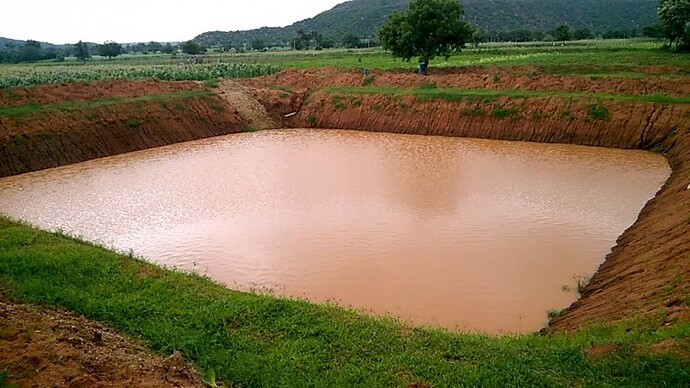Hi, I am looking for expert advice on making a water pond on my farm. I would like to make use of the natural terrain that currently exists on the land. If any one has got this done on their farms, please share the details. Thanks. Murali
Check my design. This is for a single pond. agricultureforeverybody.blogspot … orage.html
Usually, it is advised to use the lowest point of the land for constructing the pond. If you have a large parcel of land, then it makes sense to have multiple ponds and connect them together.
Let me know if you need more details.
Regards
Padmanabhan Ganesan
agricultureforeverybody.blogspot.com
Is it a natural pond what is the dimensions
Dug with job or manual
Cost plz
The ideal farm pond should be dug into the ground in a naturally low-lying area.
Some of the soil that is removed can be used to construct an earthen berm around the pond, which should be planted with trees and grasses for stability.
A pond that is about 10 meters by 10 meters and 3 meters deep is an ideal size.
The pond should have an inlet and an outlet lined with rock to prevent erosion.
These features will need to be linked into a larger drainage plan which directs water into the pond, and receives any overflow water.
A small settling pit at the inlet will help remove silt, and can be more easily cleaned than the whole pond .
The pond should be sized to hold about 50% of maximum runoff, so that it will fill up even in a dry year. Maximum runoff can be calculated by considering rainfall intensity and duration, watershed area, and slope, soil type, and land-use throughout the watershed.
A rough estimate is that a 1 hectare watershed in red soil can yield 250 cubic meters of water. Another question is whether the pond will be discharging or recharging.
If the pond is higher in the watershed and / or the soil is permeable, it may function more as a percolation pit than as a pond.
If the pond is lower in the watershed and the water table is high, it may naturally fill with ground-water.
It is important to decide whether the goal is to facilitate infiltration of water, or to maintain surface water in the pond, which can be easily accessed for water needs.
In the latter case, it may be necessary to line the pond to reduce permeability.
Possible linings include: clay, bentonite, stone or brick, cement, rubber, plastic, etc.
If a farm pond maintains water for 80 percent of the year it can also be used for raising fish.
To reduce the evaporation of water duckweed / azolla should be applied in the pond .
Greater depth of the pond and less surface area will also reduce evaporation losses.
However, digging deeper than 5 meters will increase the expense of the digging, and increase seepage loss due to increased water pressure on the ground.
